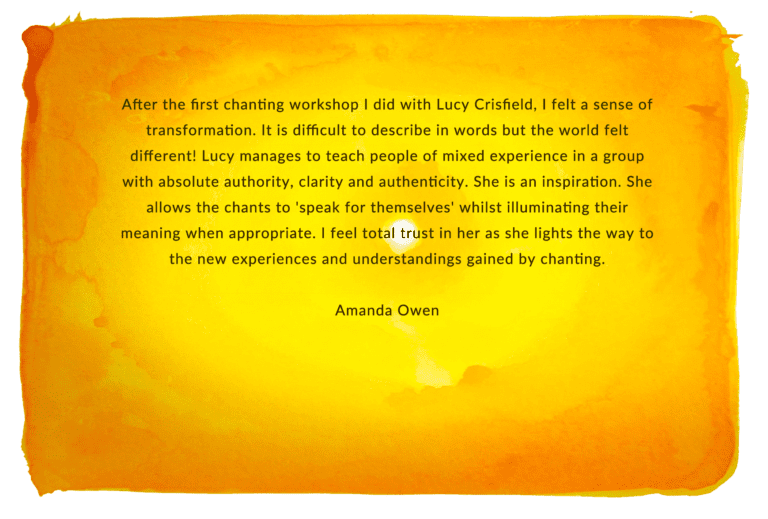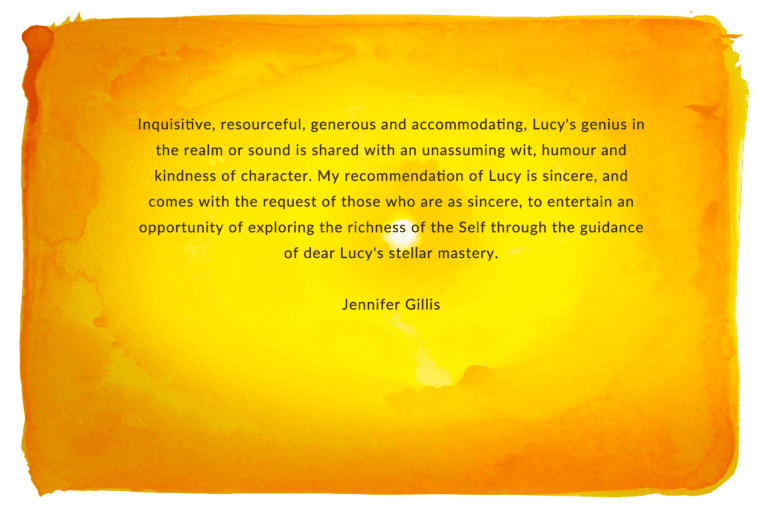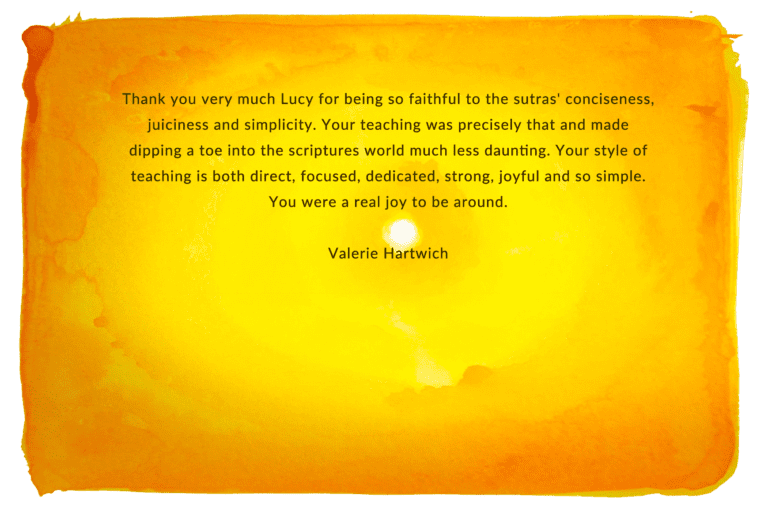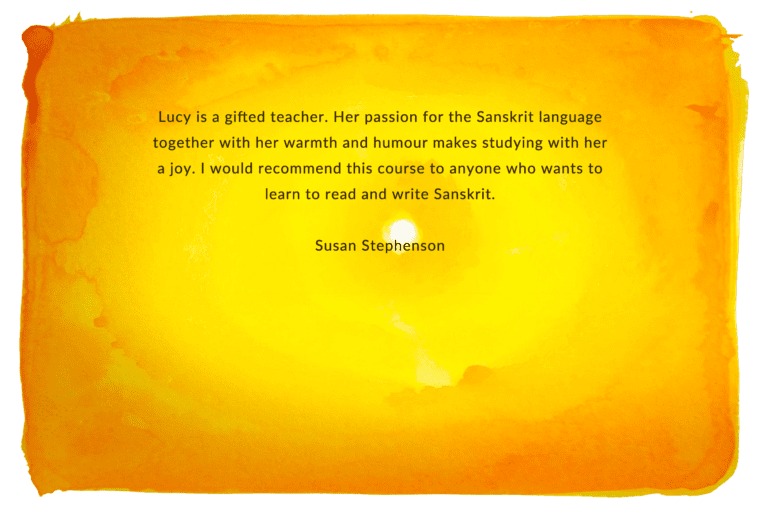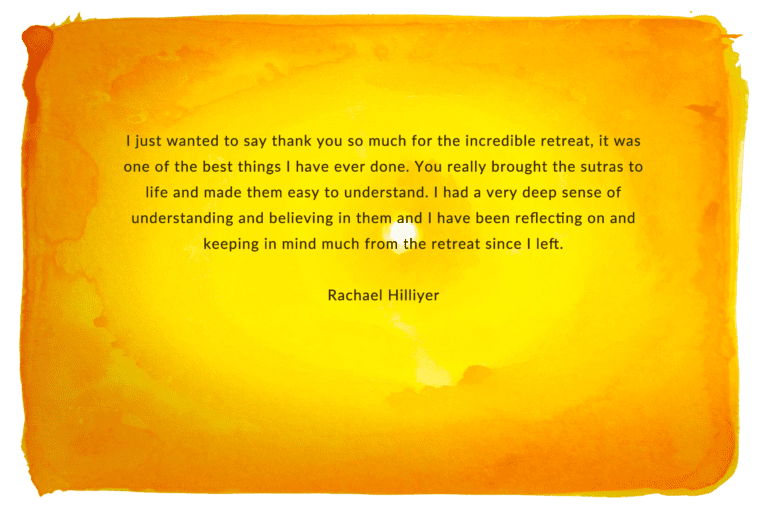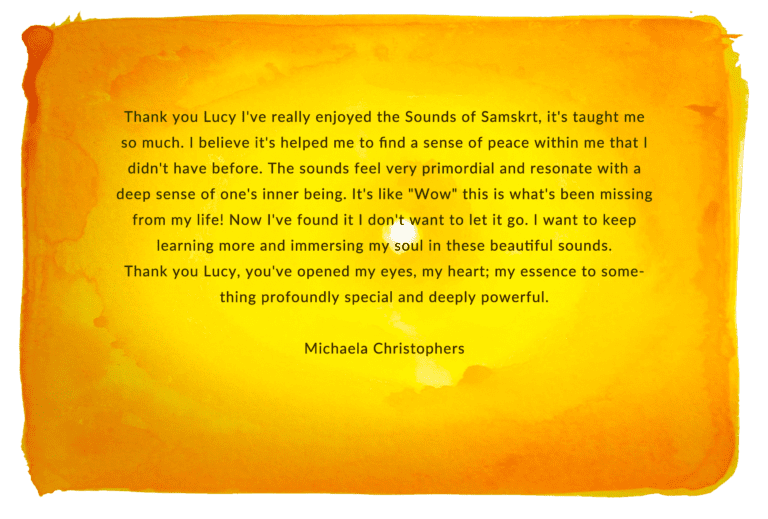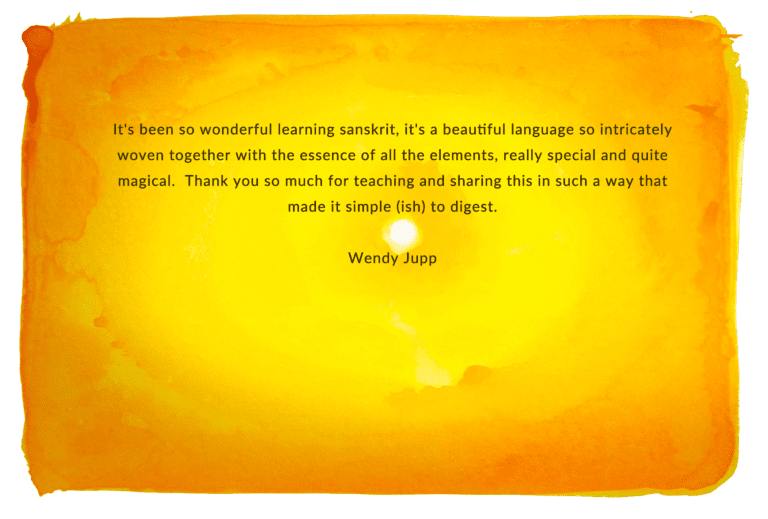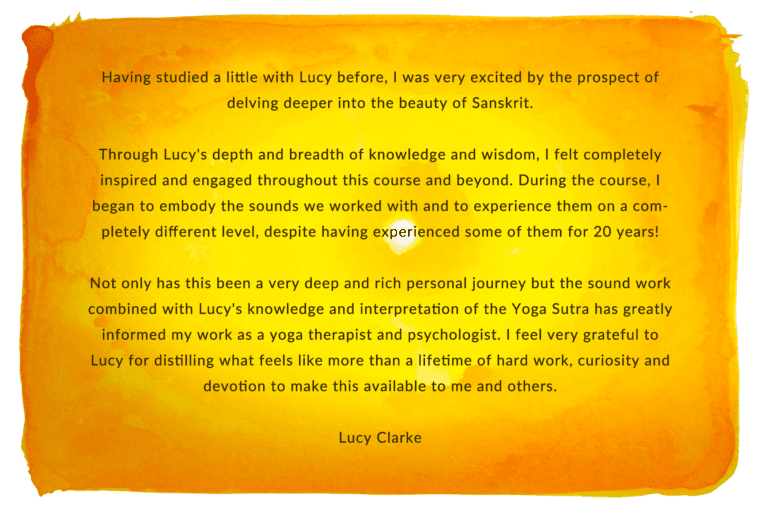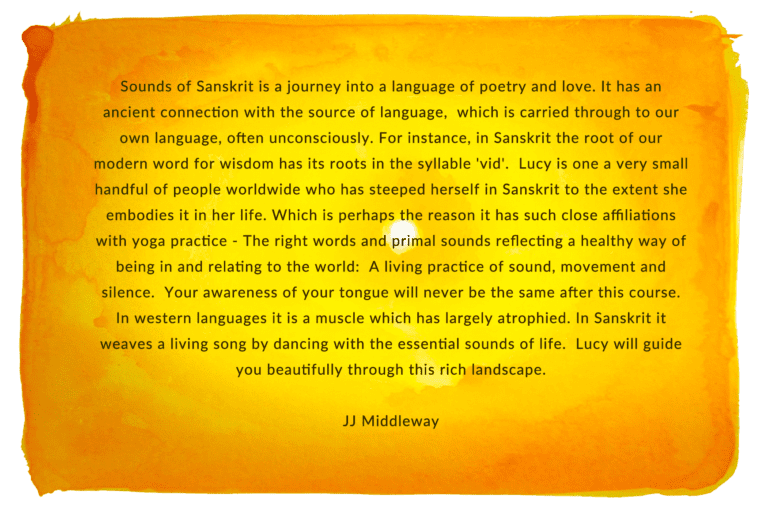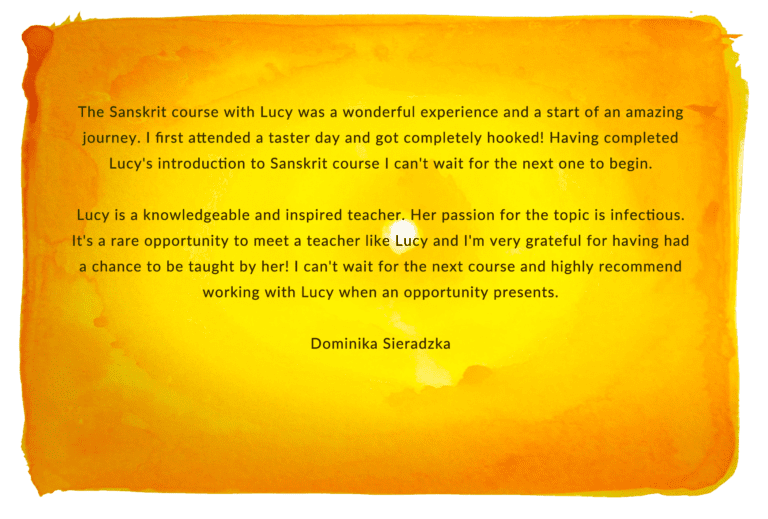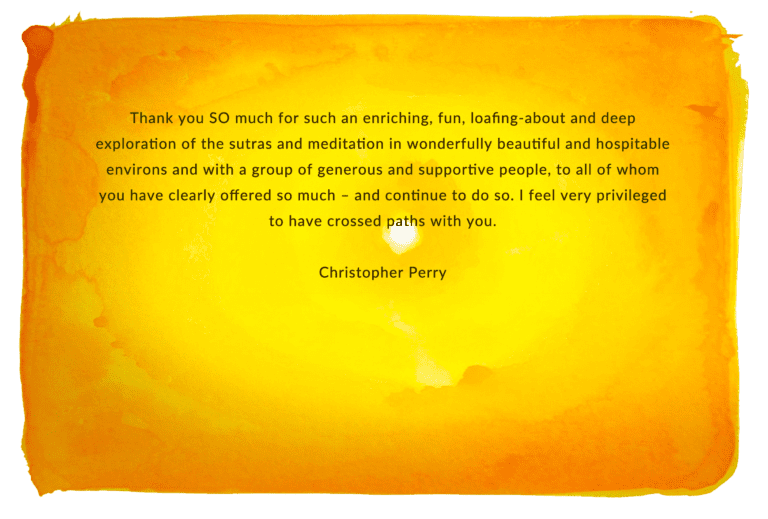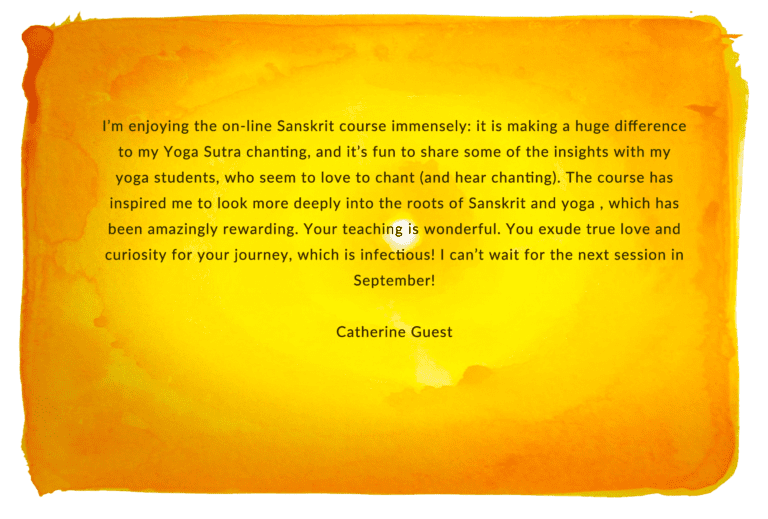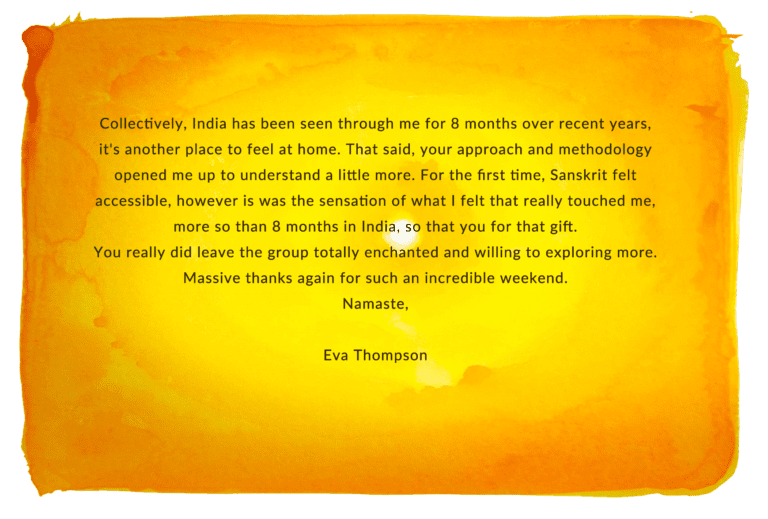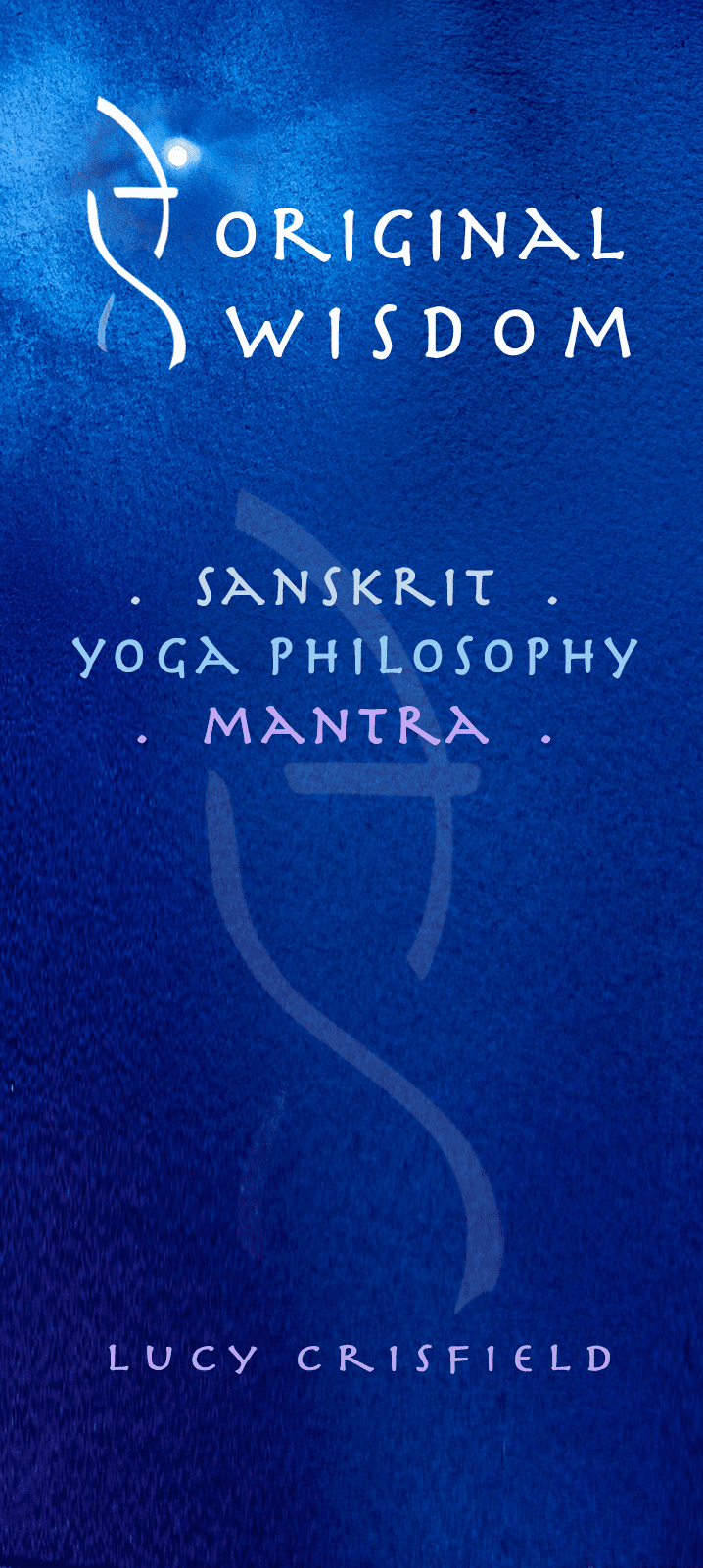The major yogic works; Patañjali’s Yoga Sūtras, the Haṭha Yoga Pradīpikā and the Bhagavad Gīta to name but a few, were all composed in the Sanskrit language. So the link between Sanskrit and Yoga is clear, but if we want to deepen our experience of yoga through this link then reading a translation of these works in English will miss the mark as the transformative effect of the Sanskrit language is held in its sound. Furthermore, in order to deeply engage with these sounds, we must become consciously aware of the connection between a sound and its effect. Traditionally, the meaning of a mantraḥ would not be given to a student until the teacher could see that this experiential connection had been made in order to ensure that meanings didn’t stay in the domain of the intellectual mind.
 To illustrate this point further, we will look at the field of music as this is something with which we all have some familiarity. A Wagner opera can move one person into a state of sublime bliss, and another can listen to it and hear a cacophony of noise, so there is a subjective quality to sound. However, there also exist certain truths; a minor chord is ‘sad’, a major chord is ‘happy’; the dorian folk mode elicits courage and energy, and the bhairav rāga from the Indian tradition evokes peace and tranquility. Whether we are able to recognise these qualities or not however is another matter. For example, for some people it is not immediately obvious when hearing a major and a minor chord as to which one is ‘happy’ and which one is ‘sad’. However after expanding our awareness through exercises which help us to make a connection between sound and effect, we realise which emotion dwells in which chord.
To illustrate this point further, we will look at the field of music as this is something with which we all have some familiarity. A Wagner opera can move one person into a state of sublime bliss, and another can listen to it and hear a cacophony of noise, so there is a subjective quality to sound. However, there also exist certain truths; a minor chord is ‘sad’, a major chord is ‘happy’; the dorian folk mode elicits courage and energy, and the bhairav rāga from the Indian tradition evokes peace and tranquility. Whether we are able to recognise these qualities or not however is another matter. For example, for some people it is not immediately obvious when hearing a major and a minor chord as to which one is ‘happy’ and which one is ‘sad’. However after expanding our awareness through exercises which help us to make a connection between sound and effect, we realise which emotion dwells in which chord.
We can then expand our awareness so that we can feel the effect of the movement between chords. Some chord progressions are sturdy and determined; others more enigmatic and subtle; each generates a different feeling in the body effecting flow, spaciousness and balance. Once we can consciously feel the effects of these sounds our mind becomes more perceptive and this will then change and deepen our connection with the musical world.
In a similar way, our relationship with the Sanskrit language can be built upon in a systematic way. First we must be able to hear the link between the 5 primary vowel sounds (a, i, u, ṛ, lṛ) and the 5 elements. Once this understanding has been established, the mind will have reached a certain level of subtlety and will be ready to start hearing the unity between the building blocks of creation and the Sanskrit sounds. Nandikeśvara’s commentary on the Maheśvara Sūtras (see page ///) describes how the sounds of the Sanskrit consonants are fused with the twenty-five tattvas (building blocks of creation), the five prāṇas (breaths) and the three guṇas (qualities). These concepts are central to Sāṁkhya philosophy and are assumed knowledge in the Yoga Sūtras (YS2.18–2.23). However if this remains as information on the page of a book and does not become a direct experience which enlivens and informs our understanding of life, then we will miss what is being pointed to in these great works.
 So as we start become consciously aware of the connection between sound and form, our mind becomes more subtle and we are able to enquire more deeply into the nature of reality. The meanings of the Veda and the Yoga Sūtras also start to take on a new dimension as meanings we couldn’t hear before start to reveal themselves to us and thus the teachings start to live in our own experience. To illustrate this point further let us look at the meaning of the first sūtra of the Maheśvara Sūtra; the sounds that came from śiva’s drum as he brought the Sanskrit sounds into existence (see page //). The first sūtra is the enigmatic sequence of sounds, ‘a, i, u’ which describes the journey of being into form.
So as we start become consciously aware of the connection between sound and form, our mind becomes more subtle and we are able to enquire more deeply into the nature of reality. The meanings of the Veda and the Yoga Sūtras also start to take on a new dimension as meanings we couldn’t hear before start to reveal themselves to us and thus the teachings start to live in our own experience. To illustrate this point further let us look at the meaning of the first sūtra of the Maheśvara Sūtra; the sounds that came from śiva’s drum as he brought the Sanskrit sounds into existence (see page //). The first sūtra is the enigmatic sequence of sounds, ‘a, i, u’ which describes the journey of being into form.
The ‘a’ expresses pure being. It is the principle of illumination in creation; it is the Self (brahman) without qualities and is found within all the forms of creation. Nandikeśvara’s commentary calls it “sarvavarṇāgrya”, the sound that gives birth to all other sounds; it is the causal realm from which all forms are brought into manifestation. The Māṇḍūkya Upaniṣad tells us in Verse nine that one who knows of the all pervasiveness of ‘a’ “comes to the satisfaction of all desires and becomes the first of all”.
The ‘i’ is made not by widening the lips as in ‘cheese’ but by keeping the lips vertically wide as in the position of the ‘a’ and moving the tongue only. The sound produced is śakti, an active and energetic sound which generates and drives creative activity. It belongs to the subtle realm and is the energy required to bring energy into form. ‘U’ is the stabilising force, it is also rāsa or taste and enjoyment and it is the manifestation of the subtle energies in form. When sounded together, ‘a, i, u’ is a direct expression of the progression of matter from the silent causal realm into a physical form; as St John’s Gospel describes “the Word became flesh and dwelt among us” (1.14).
 Thus we can see that the investigation of the subject of yoga through the language of Sanskrit fundamentally points to a journey of enquiry into the very substance of our being; what are we made of and what is the connection between the vibration of sound and the essence of our form? Quantum physics confirms where this inquiry takes us; that which we perceive as our physical material world is not solid; and is in fact made up of energy, vibration and empty space. Ultimately, our engagement with the sounds of Sanskrit has the capacity to connect us with the goal of yoga, kaivalyam; to collapse our identification with the separate appearance of forms and merge with the vibration that unites us all.
Thus we can see that the investigation of the subject of yoga through the language of Sanskrit fundamentally points to a journey of enquiry into the very substance of our being; what are we made of and what is the connection between the vibration of sound and the essence of our form? Quantum physics confirms where this inquiry takes us; that which we perceive as our physical material world is not solid; and is in fact made up of energy, vibration and empty space. Ultimately, our engagement with the sounds of Sanskrit has the capacity to connect us with the goal of yoga, kaivalyam; to collapse our identification with the separate appearance of forms and merge with the vibration that unites us all.
As Patañjali’s Yoga Sūtras say:
Tadabhāvāt saṁyogābhāvo hānam taddṛśeḥ kaivalyam (2.25)
…….Kaivalyam svarūpapratiṣṭhā vā citishaktir iti (4.34)
By removal of ignorance, identification is removed. This is Absolute freedom (kaivalyam) of the seer. (2.25)
Ultimate freedom (kaivalyam) is when the power of consciousness is situated in its own essential nature.
(4.34)
© Lucy Crisfield
